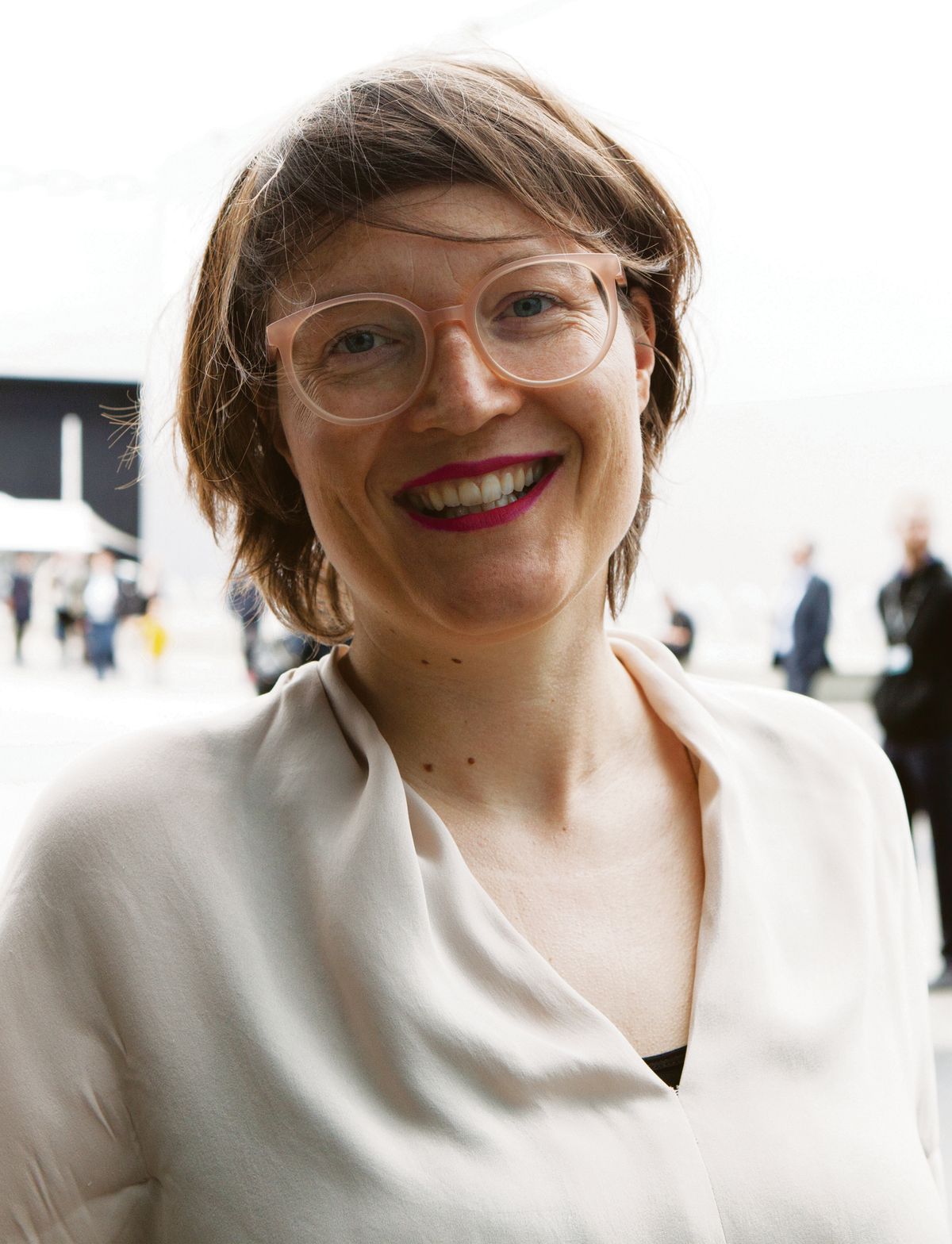Nina Zimmer, currently the deputy director and curator of Modern art at the Kunstmuseum Basel, is heading to the Kunstmuseum Bern as its new director. She is also going to lead the Zentrum Paul Klee nearby. Before she leaves Basel, however, she is organising a major exhibition about Jackson Pollock (The Figurative Pollock, 2 October-22 January 2017) that could change how we think of the US artist, best known as an Abstract Expressionist. “It will show that from his early to late works, he continued to create figurative pieces. Even the abstract works have figures underneath and were a starting point,” she says. The show will include around 100 works by the artist, who became a superstar in the late 1940s.
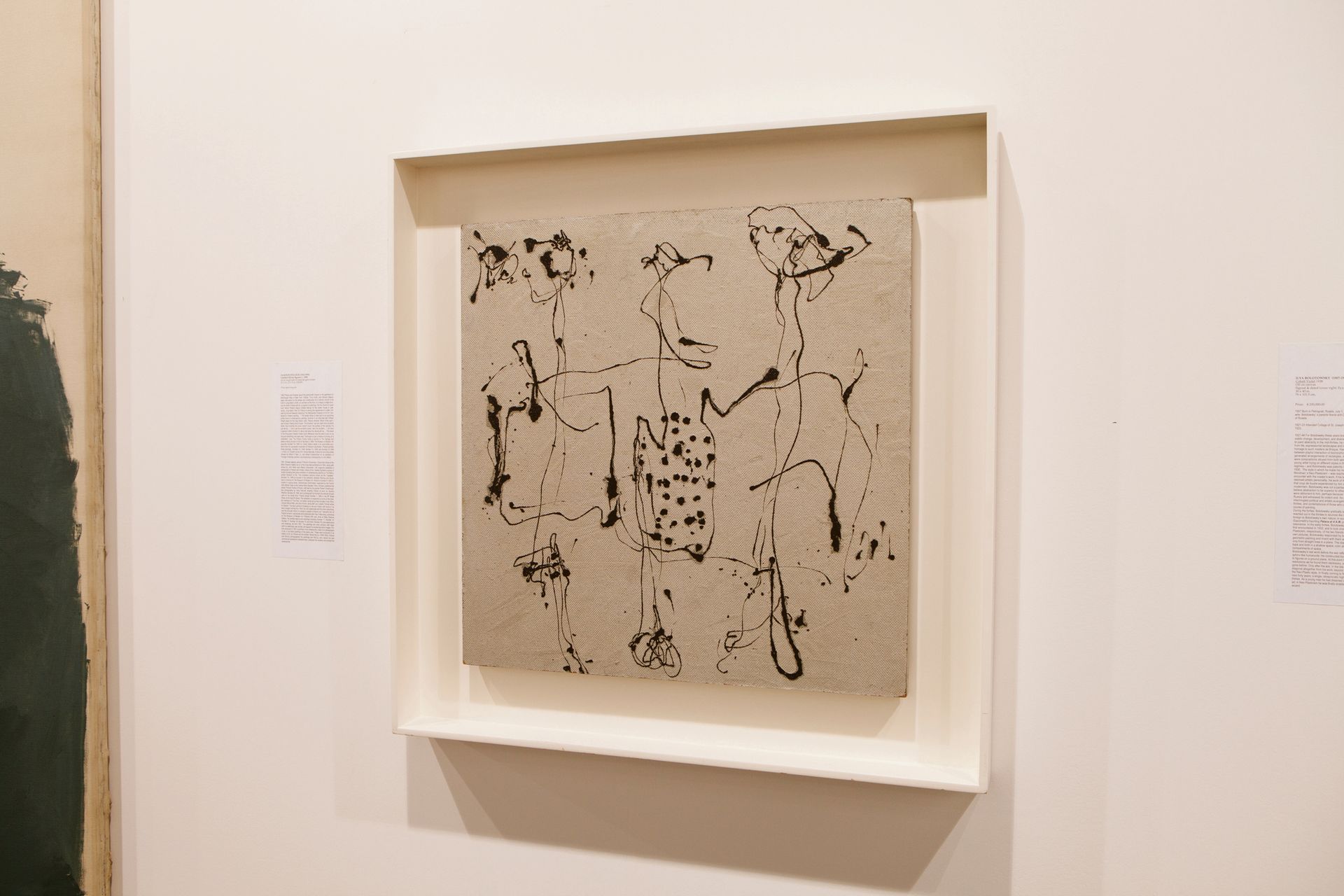
Jackson Pollock, Untitled (Silver Square) (around 1950) “This untitled silver work is from Pollock’s so-called black-and-white period, when he developed figuration out of the drips. He drew three figures on canvas; they are ambiguous but quite likely female figures. His dripping technique is highly controlled. Contrary to what we think about Pollock, his abstract drip paintings were a rather short exceptional phase—but even then, he started his painting process with figuration and then worked against it.”• Washburn Gallery, New York
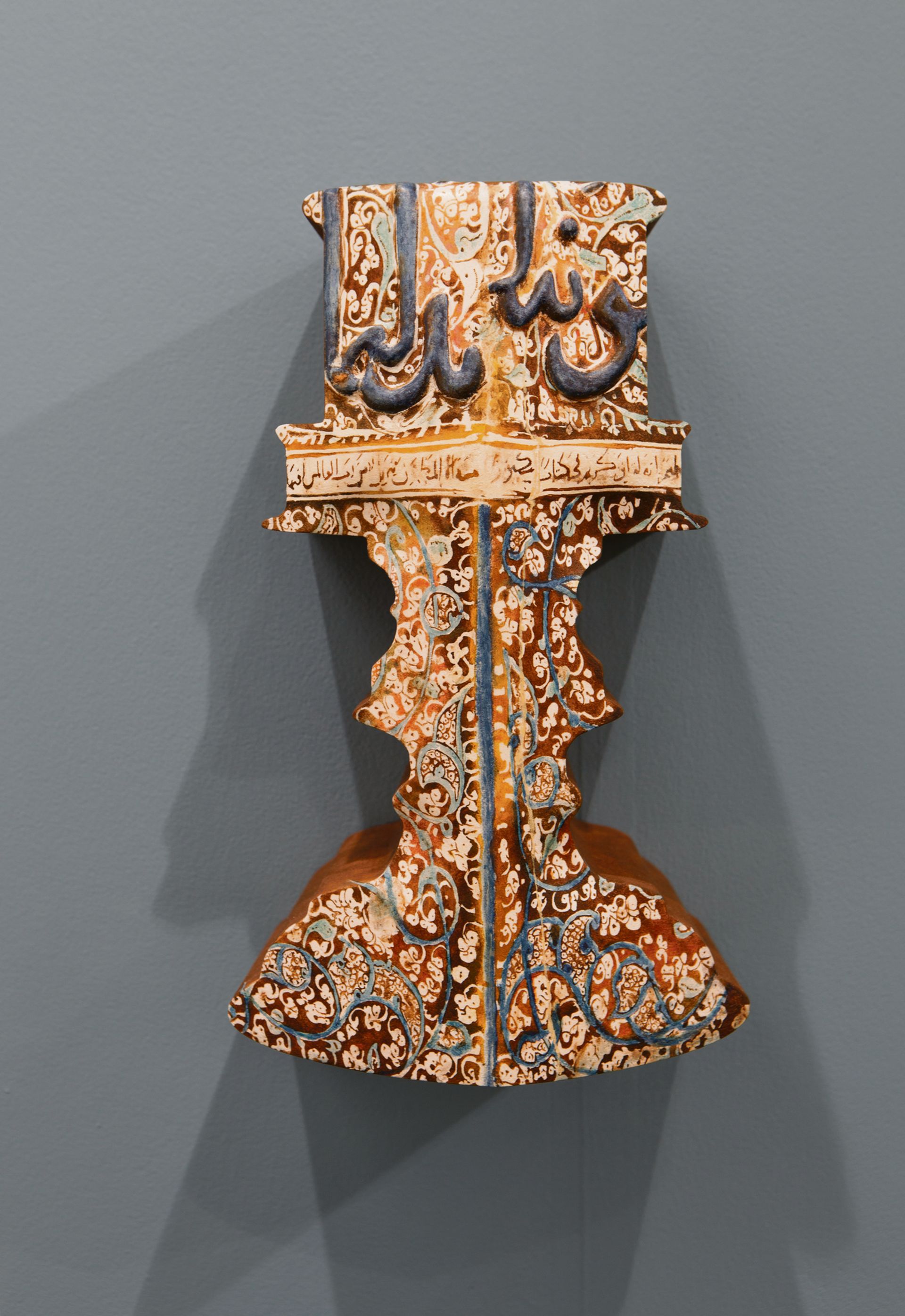
Walid Raad, Preface to the third edition_ Acknowledgements_ Fragment II (2015) The Lebanon-born, New York-based artist Walid Raad’s wall-mounted work refers to the Louvre lending some of its Islamic treasures to its branded satellite in Abu Dhabi. “It’s a conceptual piece relating to power relations that become obvious in institutional museum politics. Raad refers to the 294 Islamic objects in the Louvre’s collection that are going back to the region as loans [the pieces are among nearly 18,000 artefacts in the institution’s Islamic collection]. In a twist that is typical of Raad, the objects of exchange take on the character of human beings and exchange ‘skin’, ‘limbs’ and ‘organs’ while being transported.”• Sfeir-Semler Gallery, Beirut and Hamburg
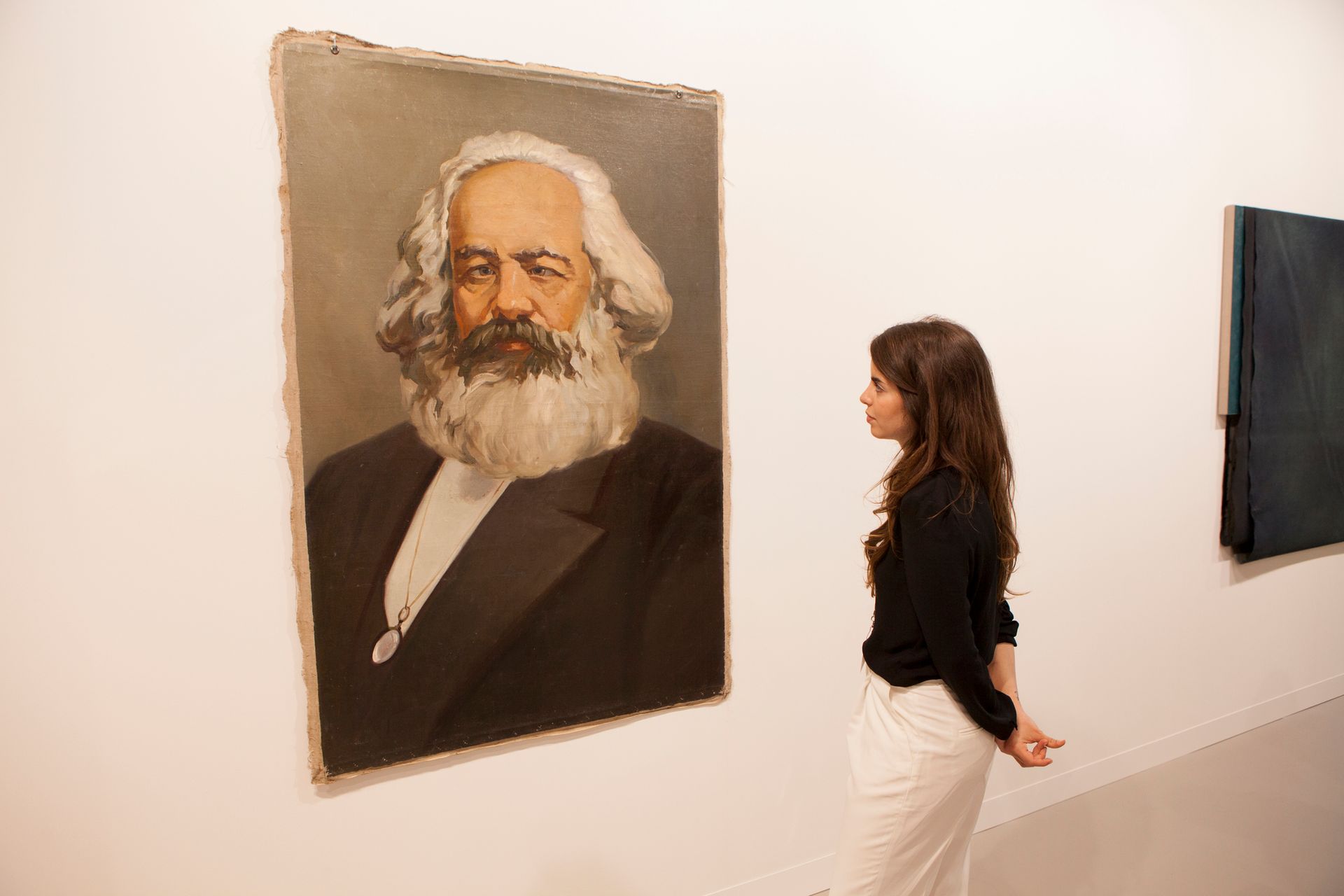
Hans-Peter Feldmann, Karl Marx with cross-eyes “Hans-Peter Feldmann is one of the most important conceptual artists, and he often works with found images. Here, he’s altering an existing oil painting, changing Marx’s clear sight of things. Feldmann has a very dry sense of humour—he’s been chronicling West German humour, in a way. It’s an iconic work.”• Mehdi Chouakri, Berlin
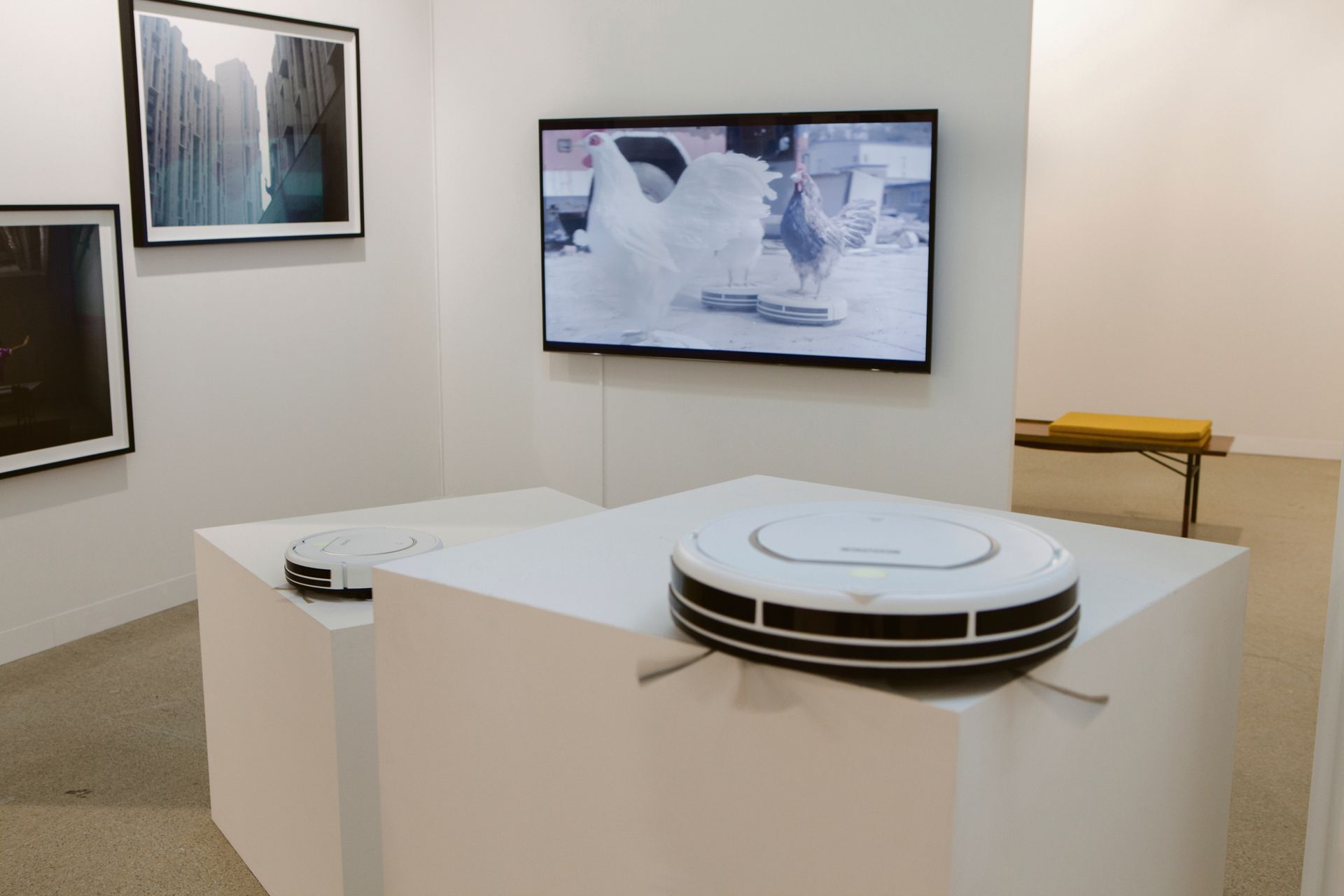
Cao Fei, Rumba II: Nomad (2015) The leading Chinese artist Cao Fei’s video installation includes scenes shot in the gritty streets of Beijing, a pair of cleaning robots and perhaps a reference to the film Wall-E, in which a robot is left on an abandoned planet Earth to clean up our mess. “It’s very simple and symbolic. She sets the cleaning robots free in a rough environment. There is so much to clean—the task is superhuman and the irony is obvious.”• Vitamin Creative Space, Guangzhou and Beijing

Tris Vonna-Michell, Perforations II (Wasteful Illuminations) (2016) The young British artist Tris Vonna-Michell has created a work featuring sound and photography. “Tris is an artist who works with sound, performance and conceptual art; I’ve liked and followed him for a few years. This is a piece about an early trip to Japan. He slept rough as he had no money, and he lost everything, so later he went back and recreated some of the material. It is a sort of mood board.”• Jan Mot, Brussels
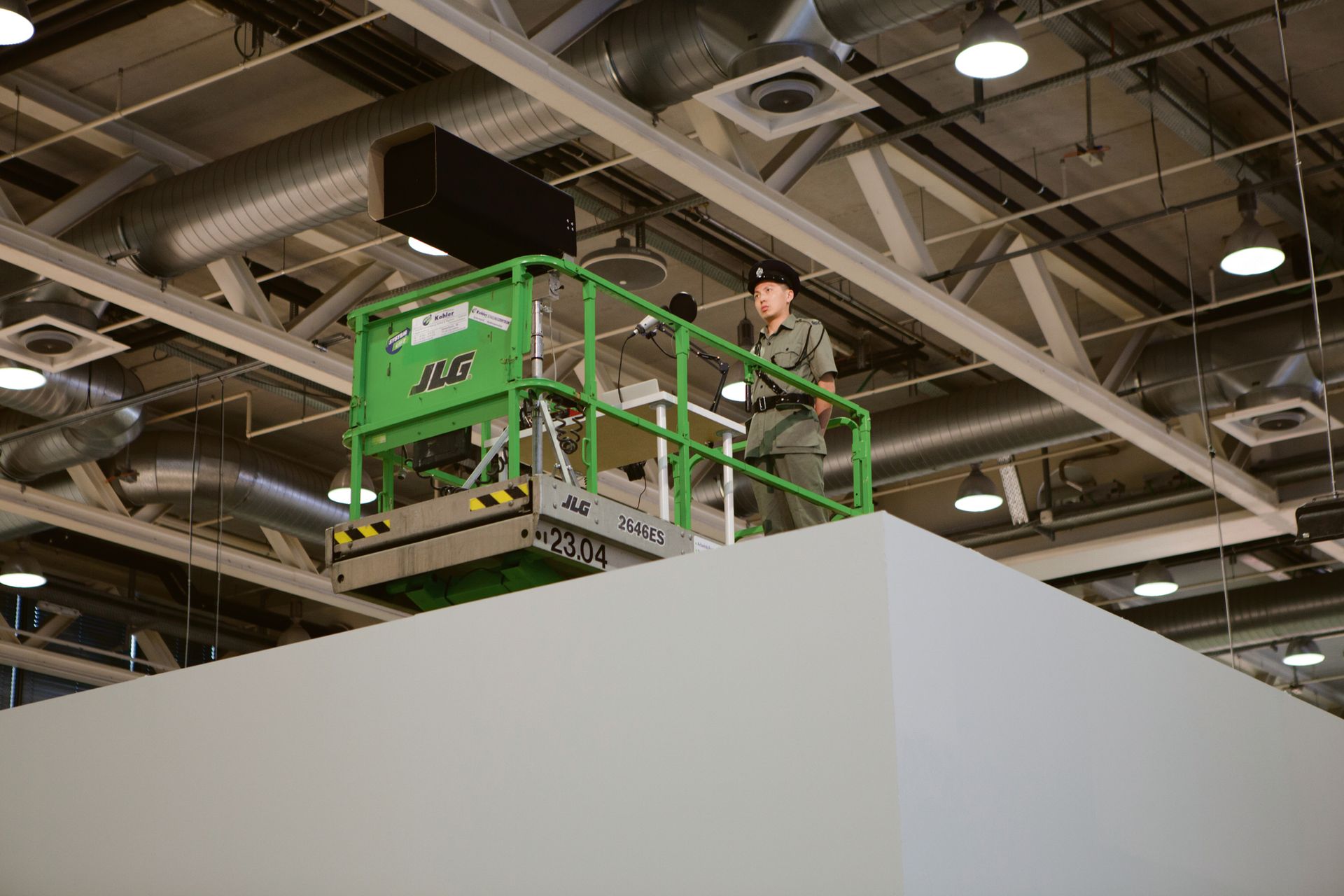
Samson Young, Canon (2015) The Hong Kong-based artist Samson Young has created a work that commands visitors to look up and listen in the Unlimited section of the fair. “It fits in with his works in sound and media and his interest in political frontiers. He’s referencing the border between South and North Korea, where a kind of Cold War is being waged with loudspeakers. The man on the cherry picker is imitating bird song—possibly a reference to Paul Klee’s Twittering Machine.”• Galerie Gisela Capitain, Cologne; Team, New York


